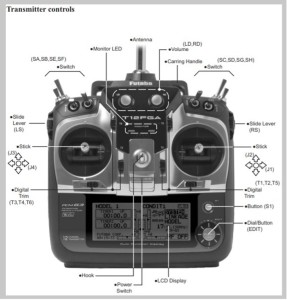The Charity
Aviation
Maritime
DUASxxx5
Initial Report
[Organisation] show last week. Firstly, I would like to thank everyone who helped to retrieve my [Model Aircraft Type] after the loss of power which resulted in the model landing in the rough grass area, severely damaging the wings. Two pilots I would like to mention are [Pilot 1], and [Pilot 2], many thanks. Sunday morning, I transferred the model from my car to the workshop, and I am relived to say that the fuselage, engine, and all associated equipment is in perfect order, no damage whatsoever. Checking the radial engine I removed the plugs one at a time, switched on the ignition and with one plug connected to its lead and the other four remaining in the engine, holding the prop I turned the engine over and got a full spark. I repeated this procedure until all five plugs were removed, all with a full spark. So, no ignition problems. However, when I was turning the engine over it gave a kick, it did it a couple of times and I thought it must be due to some residual fuel in the cylinders. The tank had been emptied although a small amount always remains. When the model had been retrieved, I switched off all the receiver switches etc, and then the transmitter which I put into the carry case. So, all the switch settings were as the model landed. Wednesday in bed thinking as usual what happened, and then I remembered the engine kicking when I turned it over, and I thought it can’t do that unless the engine is choked. So, 2.30 am in the morning I got out of bed and went into my workshop, took the transmitter out of its case and, low and behold, the servo operated switch was in the on position, and on checking the carb the choke was on. I must have accidentally turned the switch on while flying. This would be the reason for the loss of power. What an idiot I am.
My transmitter is a Futaba T12 FGA and for 14 years the choke switch has been set on a switch SA which is a 3-position switch and a short lever. However, one flight last year the engine was not at its best, so I landed OK and found that the choke switch was in the middle position, meaning it was partially choked. So, to prevent that happening again I changed it to a 2-position switch SF which is on the top left-hand side and has a long lever. Need I say more!
CHIRP Comment

Human factor analysis at 2.30am is impressive, by anyone’s standards! It did seem to do the trick though, because the reporter discovered the root cause of the occurrence: a switch knocked into the wrong position. Very easy to do, but with significant consequences. The photograph above shows the switches that the reporter refers to in the text. As for manned aircraft, immediate action drills can be useful for time-critical incidents so, if experiencing a sudden loss of power, a check of power source (be it battery or fuel) selectors is a worthwhile action just in case something has been inadvertently moved.